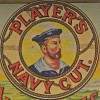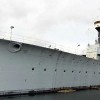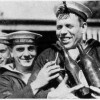Port Towns & Urban Cultures: International Histories of the Waterfront, c.1700 – 2000, Eds. Brad Beaven, Karl Bell and Robert James, (Palgrave Macmillan: Basingstoke, 2016) Despite the port’s prominence in maritime history, its cultural significance has long been neglected in favour of its role within economic and imperial networks. Defined by their intersection of maritime […]








